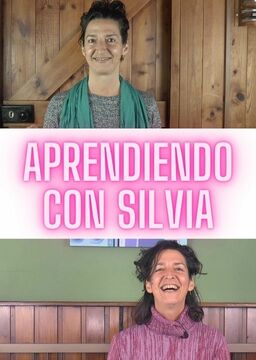









Difficulty:
 Beginner
Beginner
Colombia
Cleer attends her first post-college interview for a marketing position.
Difficulty:
 Beginner
Beginner
Colombia
Known as the "tuteo," the "ustedeo" and the "voseo," Carlos explains the historical roots and evolution of these varying ways of saying "you" in different parts of the Spanish-speaking world. Factors which affect which form is utilized by a particular person in a particular situation include that person's country of origin as well as the relationship between the speaker and the person to whom he or she is speaking.
Difficulty:
 Beginner
Beginner
Colombia
Freshly out of college, Cleer Oviedo sets up an interview for a potential marketing job.
Difficulty:
 Beginner
Beginner
Venezuela
Carolina explains the importance of agreement with possessive adjectives, which must always agree both in number and in person with the nouns they modify.
Difficulty:
 Beginner
Beginner
Colombia
Carlos explains to us the three manners of addressing a conversational partner in Spanish: "tú," "usted" and "vos." Although all three of these personal pronouns could be translated as "you," the one that is utilized in a particular context depends upon factors such as the region where one lives as well as one's relationship with the person with whom he or she is speaking.
Difficulty:
 Beginner
Beginner
Venezuela
Carolina introduces us to the concept of possessive adjectives and gives us some examples of their long and short forms.
Difficulty:
 Beginner
Beginner
Colombia
In this final part of the videos dedicated to accentuation, Carlos explains diphthongs, triphthongs and hiatuses.
Difficulty:
 Beginner
Beginner
Colombia
Carlos explains the four groups into which Spanish words are classified depending upon which of their syllables is accented as well as the rules regarding written accents.
Difficulty:
 Beginner
Beginner
Colombia
Carlos continues his series on accentuation by teaching us a few more rules regarding accent placement.
Difficulty:
 Beginner
Beginner
Colombia
Carlos gives us some preliminary rules about how to divide Spanish words into syllables.
Difficulty:
 Beginner
Beginner
Colombia
In this second part of his lesson about accentuation, Carlos explains to us about monosyllabic, disyllabic, trisyllabic and polysyllabic words.
Difficulty:
 Beginner
Beginner
Colombia
As an introduction to our lesson about accentuation, Carlos explains some different ways in which the word "accent" may be used.
Difficulty:
 Beginner
Beginner
Colombia
Lida and Cleer teach us to make Colombian buñuelos, a type of fritter eaten particularly during the Christmas season.
Difficulty:
 Beginner
Beginner
Venezuela
Carolina teaches us about disjunctive and copulative conjunctions- ways to express "or" and "or else"- in Spanish.
Difficulty:
 Beginner
Beginner
Venezuela
Carolina explains about the gerund verb form in Spanish and some mistakes that native English speakers commonly make when employing it.
Are you sure you want to delete this comment? You will not be able to recover it.